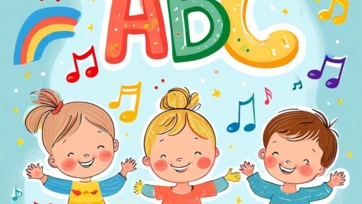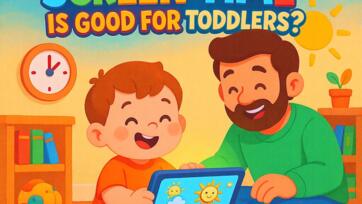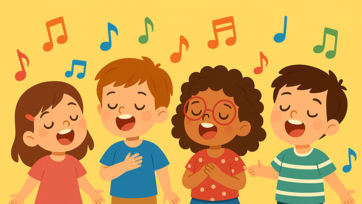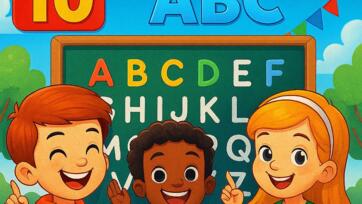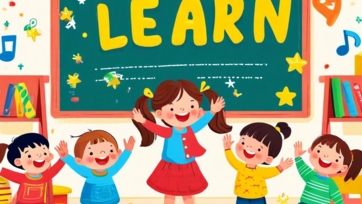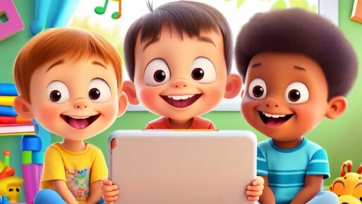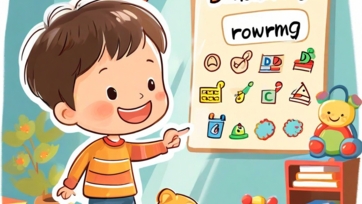How to Teach Your Baby to Clap – A Joyful Guide for Parents
One of the earliest and most heartwarming signs of your baby’s growing social and motor skills is clapping. That tiny "clap, clap" is more than just adorable—it’s a milestone that shows your baby is learning to coordinate movement, communicate, and participate in shared joy.
In this article, we’ll explore when and how babies learn to clap, fun ways to encourage it naturally, and how music and simple songs like “Clap Your Hands” can make learning even more exciting.
1. When Do Babies Start Clapping?
Most babies begin clapping around 6 to 9 months of age. This skill often follows reaching and grabbing, as babies begin to realize they can bring their hands together and make sound.
However, just like with walking or talking, every child is different. Some may start a little earlier or later—this is perfectly normal.
Clapping typically comes after:
-
Reaching for objects
-
Grabbing and transferring toys between hands
-
Banging objects together
Once they understand cause and effect, clapping becomes an exciting discovery!
2. Why Is Clapping an Important Milestone?
Clapping isn’t just fun—it’s developmental. Here’s what it supports:
-
Motor skills – Coordinating both hands together boosts muscle strength and control.
-
Social connection – Babies often clap in response to praise, music, or joy.
-
Cognitive development – Learning to imitate movement improves memory and learning.
-
Emotional expression – Clapping is an early way for babies to share excitement and seek interaction.
3. How to Encourage Your Baby to Clap
a) Be Their Role Model
Babies learn by watching. Start by clapping during playtime, when you're happy, or after your baby does something new. Smile and say, “Yay! Clap, clap!”
b) Use Music and Rhythm
Songs like “Clap Your Hands,” “If You’re Happy and You Know It,” or “Pat-a-Cake” are perfect tools. The rhythm and repetition naturally guide your baby to mimic clapping. Try gently helping their hands move along with the beat until they try it themselves.
c) Make It a Game
-
Sit face-to-face and play clapping games.
-
Clap a rhythm and pause—see if they respond.
-
Celebrate when they try, even if it’s just touching their hands together.
This turns learning into a joyful interaction.
d) Use Everyday Moments
Clap when:
-
They finish a meal
-
They put a toy in a basket
-
You say goodbye or greet someone
This connects clapping to communication and emotion.
4. Fun Songs and Activities That Help
Songs create a natural rhythm that babies love to follow. Here are a few:
-
Clap Your Hands (Song): “Clap your hands, clap your hands, listen to the music and clap your hands...” This repetition helps babies understand action through language.
-
Peekaboo Clap: Hide your hands behind a blanket, then suddenly clap with a big “Yay!”—babies love surprises.
-
Mirror Clap: Sit with your baby in front of a mirror and clap together. Seeing the action from both angles boosts imitation.
5. What If My Baby Doesn’t Clap Yet?
Don’t worry! Some babies take longer to coordinate both hands. Here’s when to check with your pediatrician:
-
By 12 months, if they’re not showing interest in imitating gestures like waving or clapping
-
If they don’t respond to music or social cues
-
If they rarely move their hands purposefully
Usually, babies simply need more time, encouragement, and interaction.
6. Your Role as a Parent: Connection First
Remember, clapping is about connection, not just coordination. Your reactions, encouragement, and smiles give your baby the confidence to try new things.
Don’t push or pressure—just offer your hands, your joy, and your voice. Every time you say “Yay!” and clap with love, you’re planting seeds of confidence and celebration.
7. Final Thoughts
Teaching your baby to clap is a fun, playful way to build connection, motor skills, and social awareness. It’s not about perfection—it’s about presence.
Celebrate every attempt, turn music into movement, and keep clapping with joy. That tiny sound of little hands coming together is one of the loudest signs that your baby is learning, growing, and enjoying the world—with you by their side.

